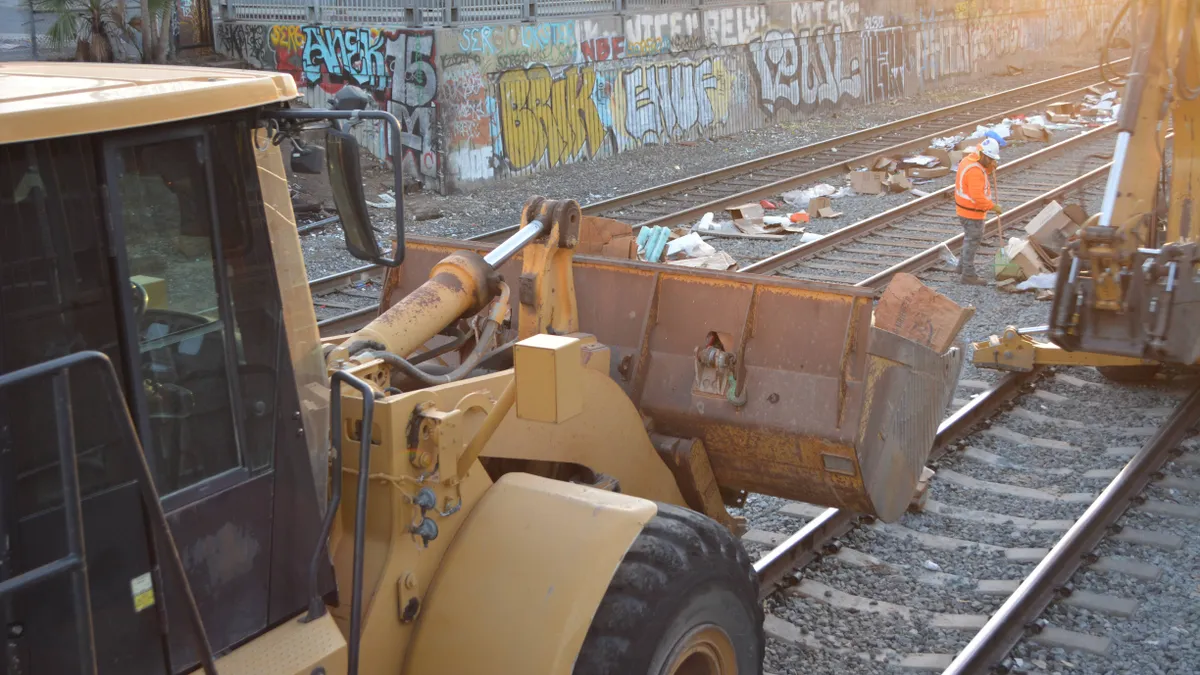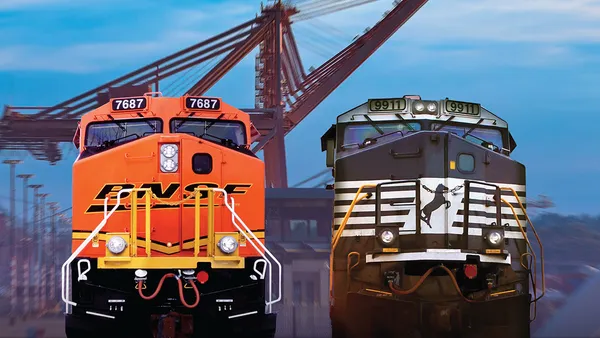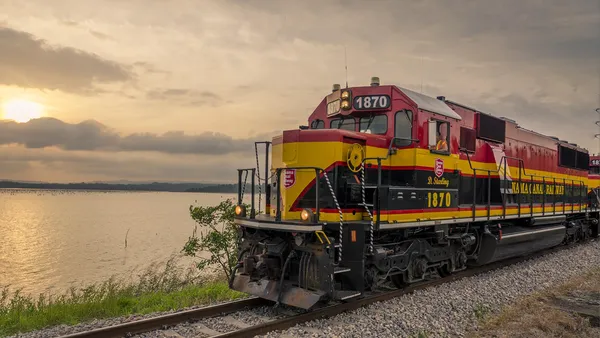LOS ANGELES — Robert Vega and his friends talked over beers and the beeping clamor of a nearby excavator after work Friday behind their auto dismantling shop in Lincoln Heights, east of downtown.
On the Union Pacific railroad tracks nearby, workers in neon vests and hard hats cleared months’ worth of cardboard packaging and other debris from train burglaries that have captured national attention as yet another vulnerability in companies’ supply chains.
The men in Vega’s group grew up in the neighborhood, he said, and they spend every week hanging out there after work. They’ve watched the break-ins — an ancient headache for railroads — worsen over the past eight months or so, as trains carried a surge in e-commerce imports from the nation’s largest container ports.
"Lately, it’s gotten really bad," he said. The men watch it unfold during happy hour: "It's a show for us."
A 160% increase in the burglaries along the railroad tracks in L.A. County since December 2020 cost Union Pacific at least $5 million, the railroad told The Los Angeles Times. Safety is a concern, too: While no one was injured and officials have not identified the cause, a train derailed near the site of the debris on Jan. 15, CBSLA reported.
Union Pacific has increased its police presence and is working with city and state law enforcement and district attorneys to prosecute theft cases, according to Lance Fritz, the railroad’s chairman, president and CEO. California Gov. Gavin Newsom on Thursday announced a multi-agency task force, led by the state Highway Patrol, would crack down on the break-ins.
Thefts from containers on stopped or slow-moving freight trains, which "used to be a nuisance" as recently as two years ago, have developed into a more organized crime, Fritz told investors on a Q4 earnings call.
"We've got our arms around it," he said. "We've cleaned up the area, and we're going to be enhancing security."
The railroad plans to add security barriers to help keep trespassers off the tracks, Fritz said. He called the need for the barriers "unfortunate."
"They won't be necessarily pretty," he said. "But it will protect our property. And more importantly, it'll protect our employees. That's probably the biggest concern I've had throughout this whole time frame. We hate impacting our customers. We really can't stomach putting our employees at risk."
More than the usual 70% of the Port of Long Beach's cargo moved by truck instead of by train last year because of inland railroad congestion and delays, said Noel Hacegaba, the port's deputy executive director of administration and operations, in an interview with Supply Chain Dive Friday.
But as companies struggle to find trucks and truckers, the Port of Long Beach has encouraged them to shift cargo to rail, and the railroads’ share of the traffic has bounced back slightly to 22%, he said.
The Long Beach port official said he had not seen any data on the effects of the train burglaries on shippers or the port.
"We’re not aware of that having a material impact on port operations in terms of delays," Hacegaba said.
After a weeklong cleanup, the Lincoln Heights tracks were mostly clear as the sun set Friday.
But evidence remained in piles on the sidewalk above: packaging for a 64-oz Nutribullet blender, a Canon PowerShot camera and a standing-and-cycling desk, lying among discarded boxes with shipping labels bound for Portland, Oregon; Vancouver, Washington; and Wylie, Texas.
"We know that city officials – everybody in the city – that they are aware of what's going on," Vega said. "The police department, too. It’s their business to take care of it."
Edwin Lopez contributed to this story.
Correction: A previous version of this story misidentified Robert Vega's first name.














